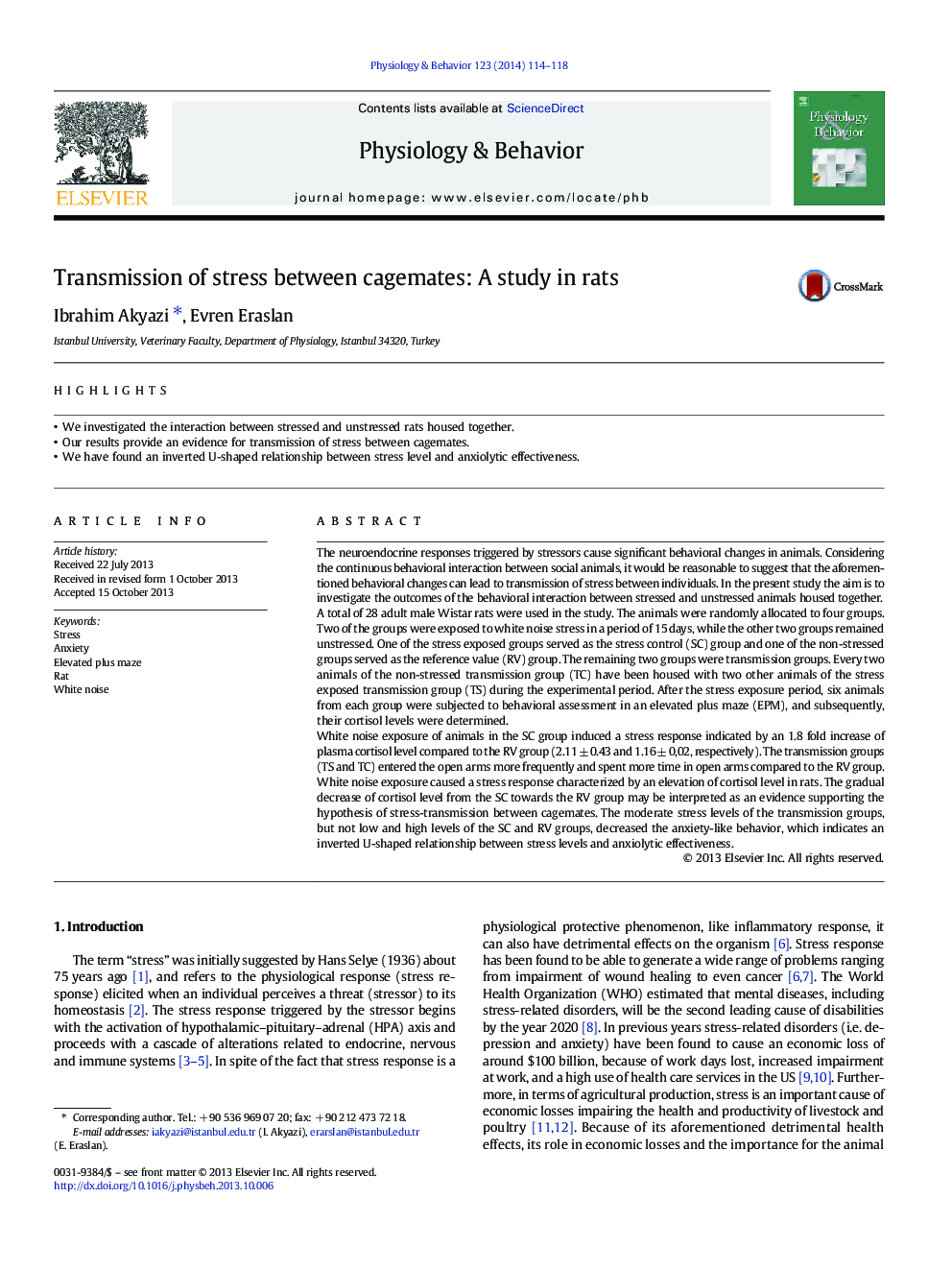| کد مقاله | کد نشریه | سال انتشار | مقاله انگلیسی | نسخه تمام متن |
|---|---|---|---|---|
| 5924558 | 1571194 | 2014 | 5 صفحه PDF | دانلود رایگان |
- We investigated the interaction between stressed and unstressed rats housed together.
- Our results provide an evidence for transmission of stress between cagemates.
- We have found an inverted U-shaped relationship between stress level and anxiolytic effectiveness.
The neuroendocrine responses triggered by stressors cause significant behavioral changes in animals. Considering the continuous behavioral interaction between social animals, it would be reasonable to suggest that the aforementioned behavioral changes can lead to transmission of stress between individuals. In the present study the aim is to investigate the outcomes of the behavioral interaction between stressed and unstressed animals housed together.A total of 28 adult male Wistar rats were used in the study. The animals were randomly allocated to four groups. Two of the groups were exposed to white noise stress in a period of 15 days, while the other two groups remained unstressed. One of the stress exposed groups served as the stress control (SC) group and one of the non-stressed groups served as the reference value (RV) group. The remaining two groups were transmission groups. Every two animals of the non-stressed transmission group (TC) have been housed with two other animals of the stress exposed transmission group (TS) during the experimental period. After the stress exposure period, six animals from each group were subjected to behavioral assessment in an elevated plus maze (EPM), and subsequently, their cortisol levels were determined.White noise exposure of animals in the SC group induced a stress response indicated by an 1.8 fold increase of plasma cortisol level compared to the RV group (2.11 ± 0.43 and 1.16 ± 0,02, respectively). The transmission groups (TS and TC) entered the open arms more frequently and spent more time in open arms compared to the RV group.White noise exposure caused a stress response characterized by an elevation of cortisol level in rats. The gradual decrease of cortisol level from the SC towards the RV group may be interpreted as an evidence supporting the hypothesis of stress-transmission between cagemates. The moderate stress levels of the transmission groups, but not low and high levels of the SC and RV groups, decreased the anxiety-like behavior, which indicates an inverted U-shaped relationship between stress levels and anxiolytic effectiveness.
Journal: Physiology & Behavior - Volume 123, 17 January 2014, Pages 114-118
